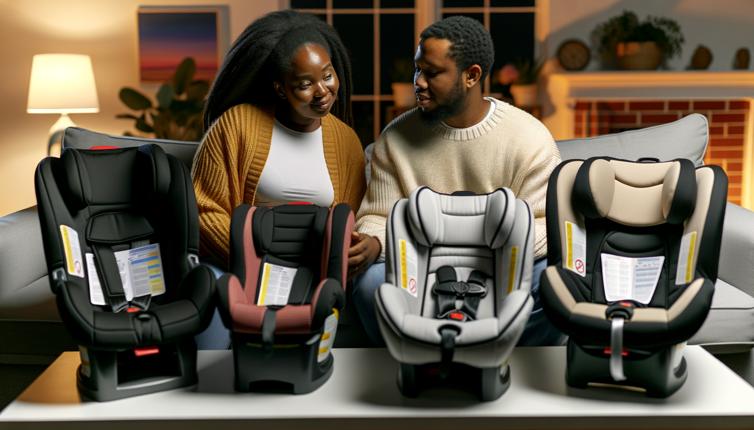1. Understanding Car Seat Types
There are several types of car seats to consider when selecting one for your child. It's important to choose a seat that is appropriate for their age, weight, and height.,Infant Car Seats: These seats are designed for newborns and infants up to 35 pounds. They typically have a detachable base and a handle for easy carrying.,Convertible Car Seats: Convertible car seats can be used in both rear-facing and forward-facing positions, providing flexibility as your child grows. They are suitable for infants and toddlers, and can accommodate children up to 65 pounds.,Booster Seats: Booster seats are designed for older children who have outgrown their convertible car seats. They help elevate your child, allowing the seat belt to fit properly.,All-in-One Car Seats: All-in-one car seats are versatile and can be used in various positions, including rear-facing, forward-facing, and booster modes. They can accommodate children from birth up to 120 pounds.,It's essential to choose a car seat that is appropriate for your child's age, weight, and height. Follow the manufacturer's guidelines and recommendations for each specific seat.,Note: It's important to keep in mind that car seats have expiration dates. Check the label to ensure the seat is within its usable period.
2. Safety Features to Consider
When selecting a car seat, consider the following safety features:,5-Point Harness: Look for a car seat with a 5-point harness system, which includes straps over both shoulders, both hips, and between the legs. This provides the best protection and minimizes the risk of the child being ejected from the seat in the event of a crash.,Side-Impact Protection: Choose a car seat that offers side-impact protection. This feature provides additional support and safeguards your child from potential injuries in case of a side collision.,Easy Installation: Look for a car seat that is easy to install properly. Check for features like clear instructions, seat belt lock-offs, and LATCH system compatibility.,Adjustable Headrest and Recline Positions: Ensure that the car seat has adjustable headrest and recline positions to provide a comfortable and safe position for your child as they grow.,Certifications and Standards: Look for car seats that meet or exceed safety standards set by organizations such as the National Highway Traffic Safety Administration (NHTSA).,Always make sure to read the car seat's manual and follow the instructions carefully when installing and using the seat.
3. Proper Installation and Use
Proper installation and use of the car seat are crucial for your child's safety. Follow these guidelines:,Read the Manual: Read the car seat's manual thoroughly before installation and use. Familiarize yourself with the specific features and installation instructions.,Positioning: Position the car seat in the back seat of your vehicle. Rear-facing seats should be placed in the middle if possible, and forward-facing seats should be secured with the seat belt or LATCH system.,Secure Straps: Ensure that the straps are properly tightened and secured. For rear-facing seats, the straps should be at or below the child's shoulders, and for forward-facing seats, the straps should be at or above the shoulders.,Check for Movement: Once the seat is installed, check for any movement by pulling on the seat from various angles. It should be securely fastened without any excessive movement.,Check Expiration Date: Regularly check the expiration date of the car seat and replace it if needed.,Remember, car seats are designed to keep your child safe, but they are only effective when used correctly. Always follow the manufacturer's instructions and guidelines.
4. Additional Tips
Here are some additional tips to consider when selecting a car seat for your child:,Try Before You Buy: Visit a store that allows you to try out different car seat models before making a purchase. This will help you determine if the seat is the right fit for your child and your vehicle.,Check for Recalls: Before making a final decision, check for any recalls or safety concerns related to the car seat you are considering. The manufacturer's website or the NHTSA website can provide this information.,Consider Ease of Cleaning: Look for car seats with removable and machine-washable covers. This will make it easier to keep the seat clean and hygienic.,Consider Travel System Compatibility: If you are planning to use a stroller with your car seat, check if they are compatible. Many car seats are designed to be used as part of a travel system.,Regularly Inspect the Seat: Inspect the car seat regularly for any signs of wear and tear. Replace any damaged parts or the entire seat if necessary.
Conclusion
Selecting the ideal car seat for your child requires careful consideration and research. It's important to choose a seat that is appropriate for your child's age, weight, and height, and that meets all safety standards. Proper installation and use are essential for your child's safety, so make sure to read the manual and follow the manufacturer's guidelines. By following these tips and guidelines, you can ensure that your child is safe and comfortable while traveling.









